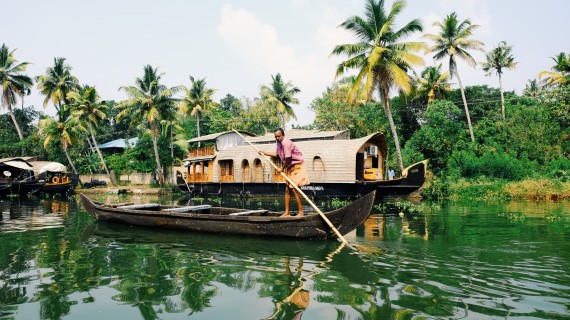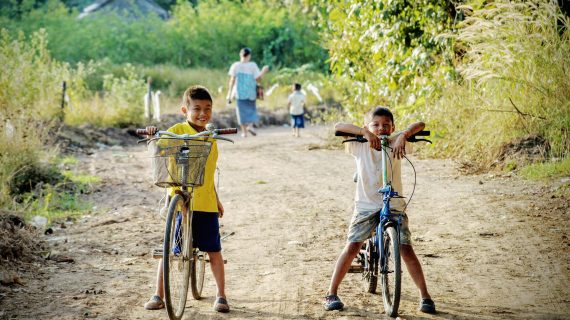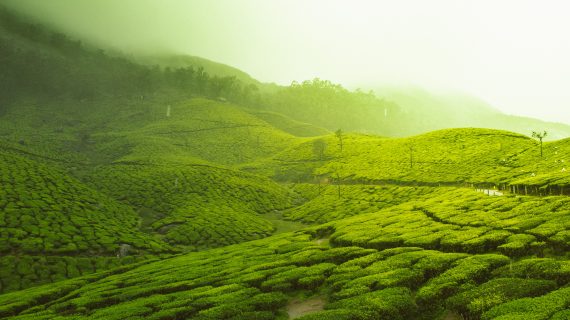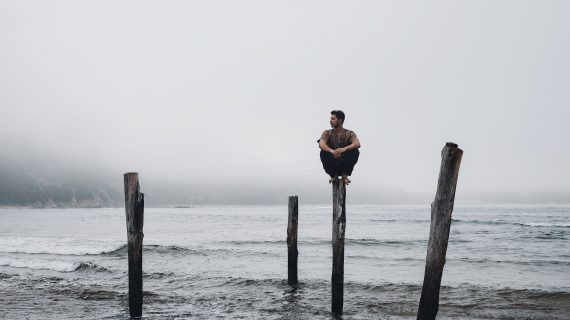Discover Galkadawala by reading the exclusive interview with Maulie de Saram, the founder of this extraordinary place that combines nature, sustainability, and community in a unique experience of responsible travel
In a world increasingly shaped by the need for sustainability, there are places that stand as beacons of responsible tourism. Galkadawala, nestled in the heart of Sri Lanka, is one such remarkable destination that combines eco-conscious practices with a deep commitment to its local community. We had the privilege of interviewing Maulie de Saram, the visionary behind Galkadawala, and with her, we explored the roots of this unique eco-hospitality and its profound dedication to sustainability.
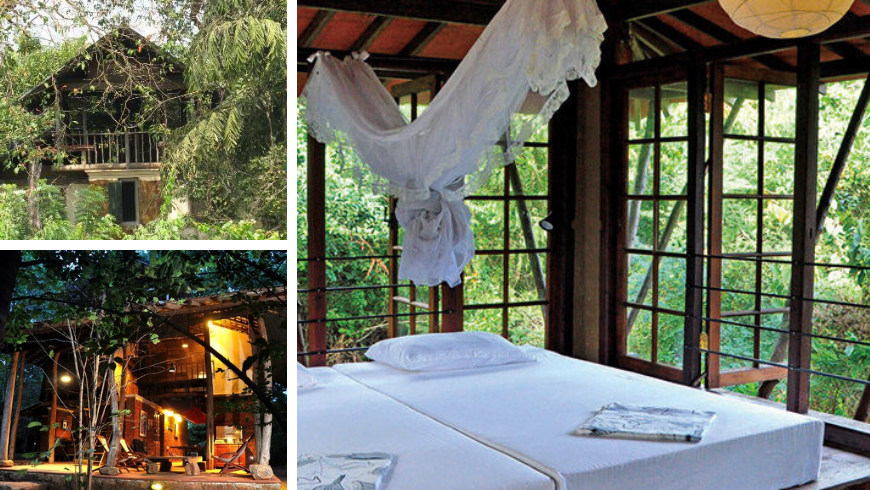
Could you tell us something about the story of Galkadawala?
It goes deep into my childhood. When I was born in 1957, my parents moved from Colombo to Kandy in Sri Lanka, where my father worked as a lecturer for many years. So, my sister and I spent our childhood in a remote and wild region of Sri Lanka, in the hills of Hanthana. We played in the woods, crossed streams, climbed trees, and when we were hungry, we gathered fruits, berries, flowers, and plants that grew in the forest. The animals and other creatures we encountered were our friends and companions. It was truly a special childhood!
Later, at the age of 49, after 20 years of working in the garment industry, exporting clothing to the United States and Europe, I decided to change my life and work. I could no longer bear the idea of what I was doing, and I sought refuge in the country’s wilderness where I had spent my childhood.
Together with my close friend Vijitha Basnayaka, I searched for land damaged by human activity to use as a base for the project. This was the opposite of what is usually done, where tourist ventures are built in picturesque locations.
We designed Galkadawala using the natural materials available and convinced carpenters and masons to reuse old building materials. Galkadawala is based on Buddhist teachings: living in moderation, following the middle path, without excess or deficiency.
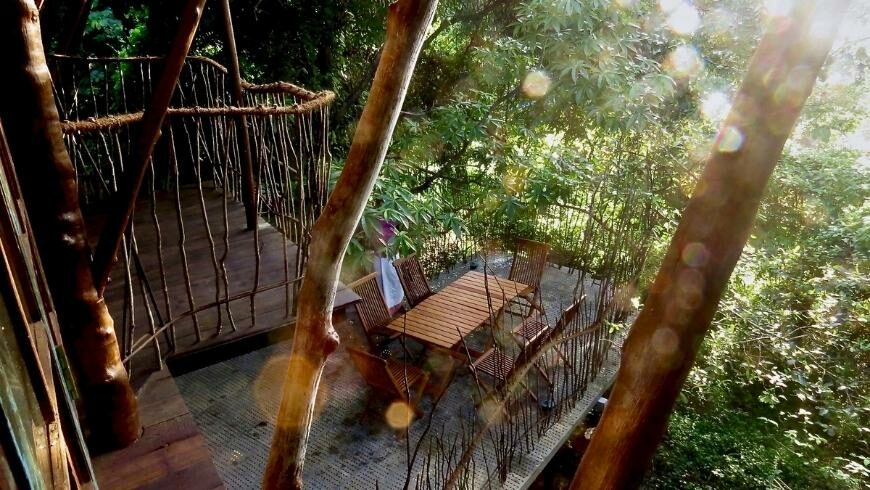
What sustainability practices have you undertaken?
Contrary to the norm where tourism accommodation is constructed in picturesque locations, we reforested a plot of land denuded by slash-and-burn cultivation. More than 600 indigenous trees were planted and the saplings that were naturally sprouting were nurtured. The living enclaves were designed according to the availability of discarded building materials, i.e. cable trunking and timber packaging of heavy equipment from a power station.
Timber windows, doors, floorboards and columns from an old tea factory which had been dismantled. Which resulted in Galkadawala being of a very unique design.
The design of the accommodations is such that it is self-cooling – the breeze from the lake flows right through the building so air conditioning is not required.
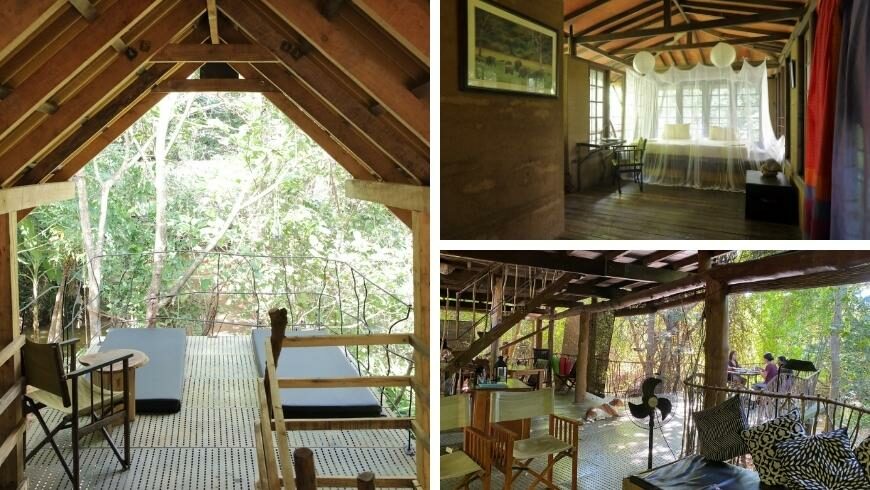
Also due to the sustainable design natural light is used to the maximum – electric lighting is not required during the daytime.
The thick canopy of the trees keeps the surroundings cool even in the height of the dry season.
Meals are ovo-lacto vegetarian or vegan only.
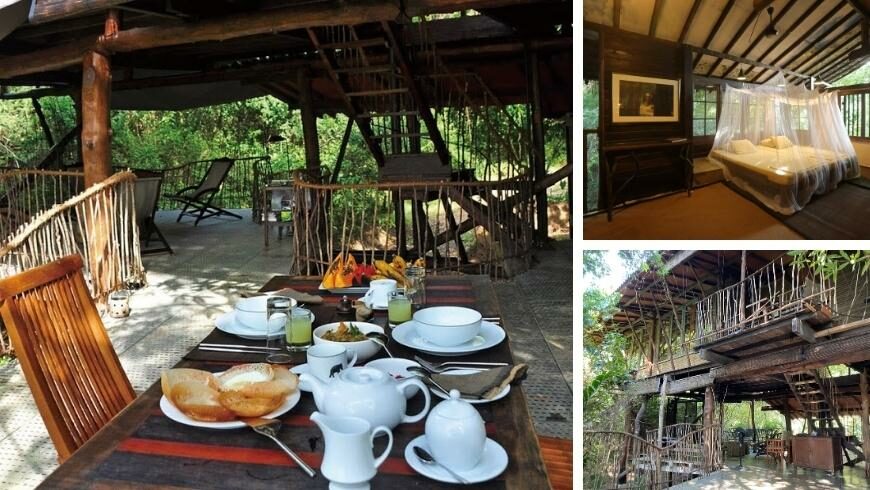
We serve water and soft drinks in glass bottles, not in plastic bottles. Also get our guests to refill their empty bottles from our water purification unit.
The shampoo and body lotions offered to our guests are natural and are in glass bottles. Biodegradable detergents are used for laundering and washing.
We use Reusable bags or Kraft paper bags when buying provisions and are bought in loose quantities as much as possible, to avoid non-biodegradable packing.
We as a member of the Ceylon Eco Lodge Owners Association are trying to achieve Zero Plastic Standards by the later part of 2024.
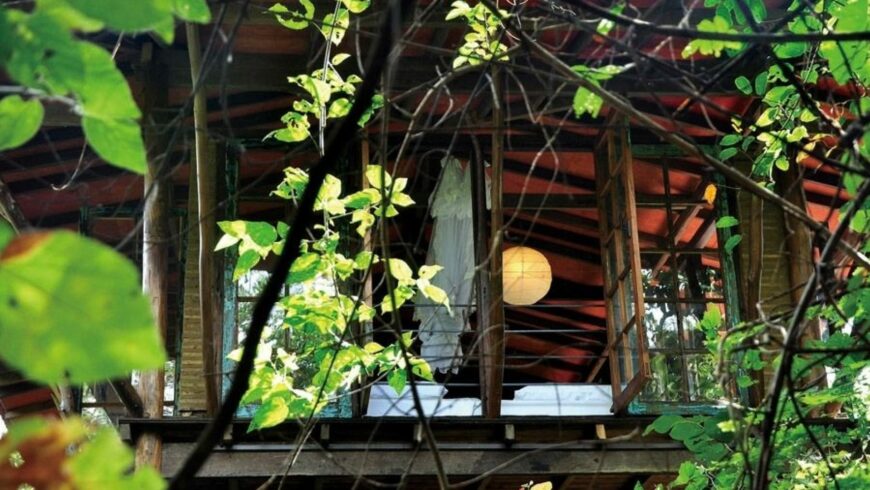
Our ‘barren plot of land’ has now become a thriving forest offering hundreds of saplings after every monsoon. We are now bagging the saplings and annually donate them to a reforestation project. This year we gifted 800 plants to a reforestation project in Maduru Oya, in the east of Sri Lanka.
How does Galkadawala support the local community?
Except for our cook, the 4 other staff members are from our village. The seasonal staff about 3 or more too are from the village.
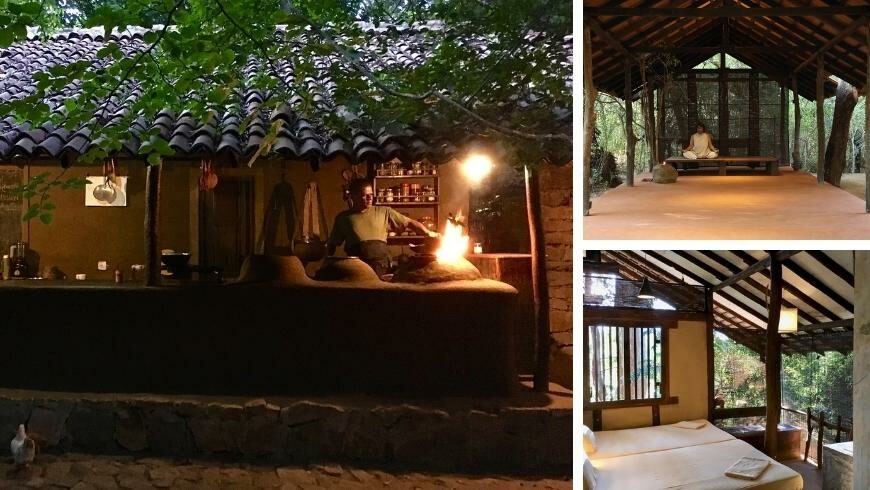
The vehicles for tours, safari jeeps, tuk-tuks, and bicycles are hired from the surrounding communities.
Most of our groceries and vegetables are bought at Habarana (the closest town) or the surrounding villages.
Furthermore, we financially support the local schools in their activities like sports, drama, Price Givings, etc.
What green itineraries do you most recommend to your guests?
We encourage guests to use local vehicles, such as bicycles for transportation.
We take them for walks in the village that leads to surrounding paddy fields, manmade lakes, and waterways. Galkadawala is a birding hotspot.
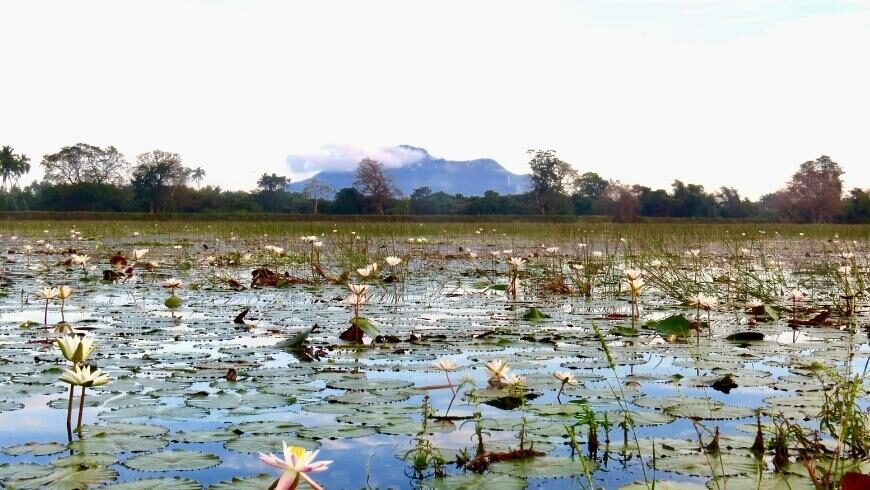
We offer our guests authentic homemade Sri Lanka vegetarian and vegan food.
What experiences do your guests enjoy more?
- The peace and quiet of Galkadawala.
- The very close-to-nature experience.
- The Sri Lankan homemade food that we offer.
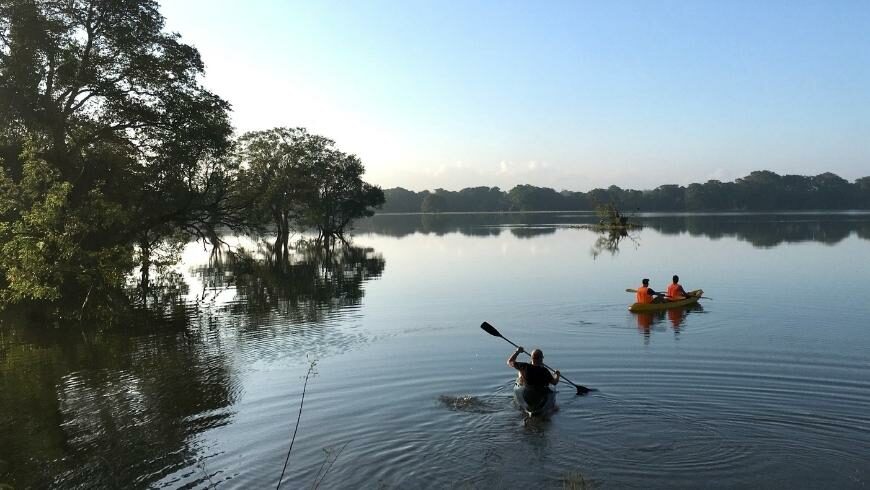
What does it mean for you to be a part of Ecobnb?
The feeling of being in a community with a common goal to make this world a better place to live. Ecobnb genuinely promotes sustainable accommodations and eco-tourism. I’m proud to be part of this project.
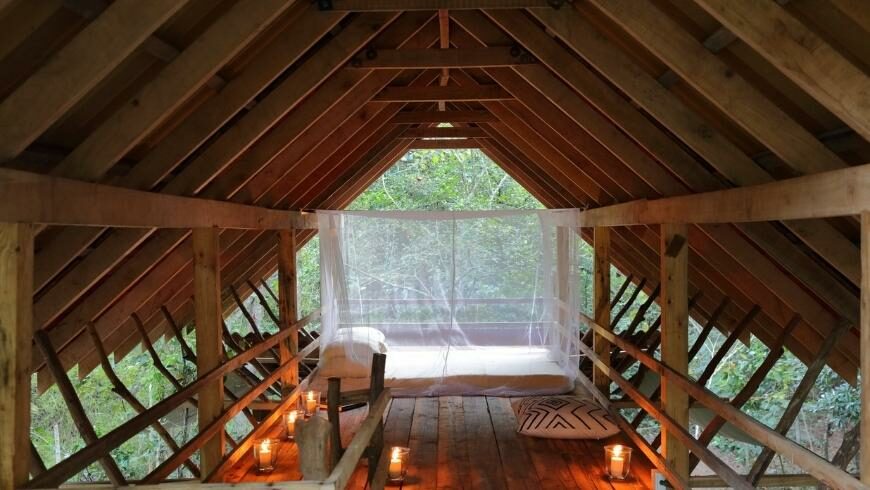
As we look to the future, places like Galkadawala inspire us to travel more responsibly and embrace the beauty of the world while leaving a positive impact on it.
In the perfect blend of nature and sustainability, this eco-sustainable haven in the heart of Sri Lanka is not just a fantastic place to stay, but a testament that tourism can coexist harmoniously with the environment and local communities.
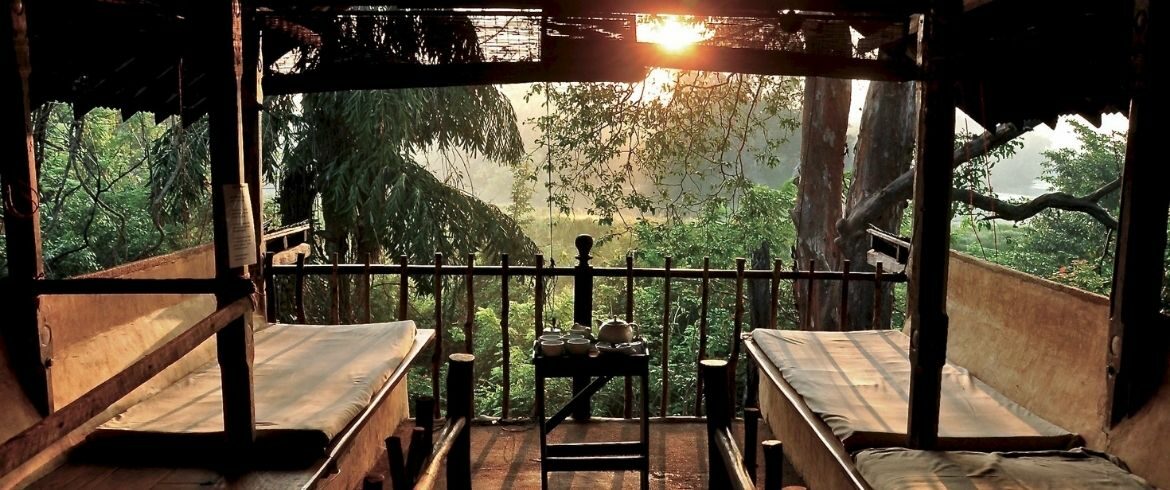
 Galkadawala Forest Lodge – Green Refuge in Habarana, Anuradhapura, North Central Province, LK
Galkadawala Forest Lodge – Green Refuge in Habarana, Anuradhapura, North Central Province, LK 